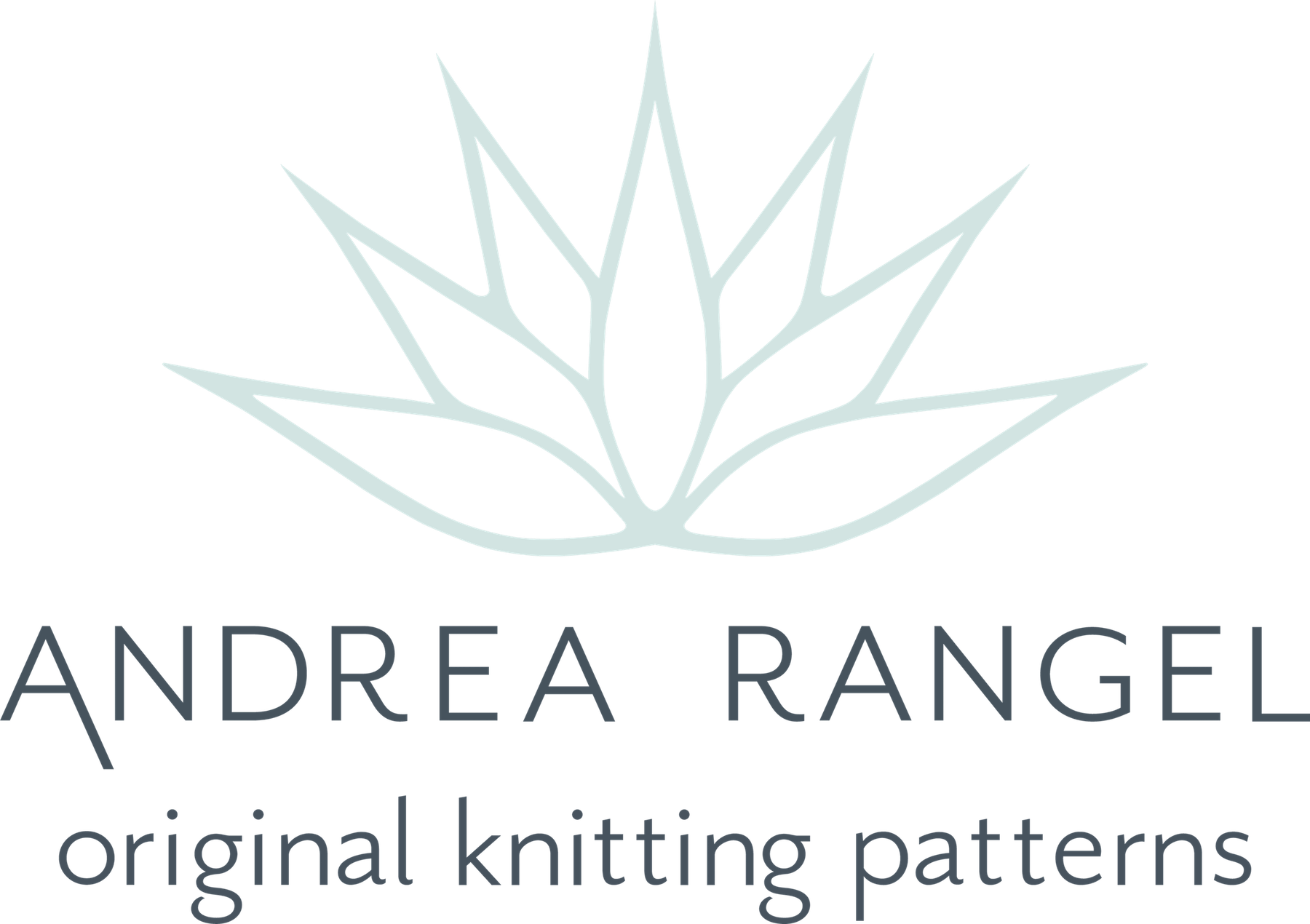How Do Half Pi Shawls Work?
Half Pi Shawls
Seaspray is my latest design, and it's worked using a clever construction known as the half pi. (Want to know more about the story behind this shawl? Check out my last post.) Half pi's are a modification of the pi shawl - a construction method with some very smart math introduced by Elizabeth Zimmermann. They're worked from the centre-out, beginning with a small number of stitches in the round. Every time the number of rounds doubles, the knitter takes a round to double the number of stitches, usually by working (yo, k1) across the round. This construction allows dramatic lace patterns to be worked without having to do any shaping while working the lace. It's a wonderful way to display lace stitches and a really fun construction to work.
The half pi is worked flat, but uses similar principles. If you've ever worked a top-down triangle shawl, the beginning of the half pi shawl will be familiar to you. It starts with a garter tab, but instead of increasing every right side row like you would with a triangle, increases are only worked when the number of rows doubles, approximately on rows 2, 6, 12, 24, 48, and 96. The exact placement of increase rows can be fudged to accommodate more or fewer rows in a lace pattern, which makes this a very flexible shape. And, you'll notice in that sequence above that the first increase is on Row 2 instead of Row 3 in order to be sure all the increase rows are RS rows.
Note that in the Seaspray pattern, the first row is called Setup Row. That's so that odd-numbered rows are RS, and it means you'll be increasing on odd-numbered rows - 1, 5, 11, etc - not even-numbered ones. Just didn't want that to confuse you!
It's important for this construction that the edge be very flexible to allow stretching during blocking, so working an attached lace edging is a lovely choice. To do that, stitches are cast on at the end of your last row of the shawl body and the edging is worked sideways. Every other row a stitch from the lace edging is joined to a live stitch from the shawl body. When it's complete, all the live stitches have been used up and you have a stunning scalloped lace edge to your elegant shawl!
Break it down
- Work a garter tab cast-on. This establishes garter edge stitches (4 at the beginning of the row and 4 at the end in the case of Seaspray) and centred shawl body stitches. (Not sure how a garter tab works? instructions are in the pattern and I'll be sharing a more in-depth look at that in my next blog post.)
- Work a WS row, setting up your markers.
- Begin the increase pattern on the next row. Increase rows are worked by first knitting the edge stitches, slipping your marker, then working (yo, k1) to marker, then adding a last yo for symmetry, slipping your marker, and working the last 4 edge stitches. (In Seaspray, you slip the last stitch of every row purl wise with the yarn in front to create a neat edge.)
- At the beginning there are very few rows between increases, so it's likely those first few rows will just be worked in Stockinette stitch (flanked by the garter edge stitches at the beginning and end of the row.) But once you have a few more rows in between increases, there's room to do some glorious lace!
- Continue as established, working an increase row to approximately double the number of stitches on your needles every time the number of rows doubles. In between increases, work your lace patterns!
- Once you've finished the body of the shawl, cast on for the edging without breaking the yarn. The edging is worked sideways and every other row one edge stitch is joined to one body stitch. Once all the body stitches are used up, just bind off the edging and block!
- Wet blocking and stretching on pins and wires is really important for this shape to be at its best, so don't try to skip that part! (Not sure how to block a lace shawl? Stay tuned - that'll be in a future blog post.)
Look closely at the rows in between the different lace patterns and you can see the holes created by the (yo, k1) increase rows. The clean line that begins the edging (perpendicular to the shawl body) is where the edge stitches were joined to the body stitches.
Ready to cast on? Get the pattern below or buy it on Ravelry if that's where you like to store your patterns.







